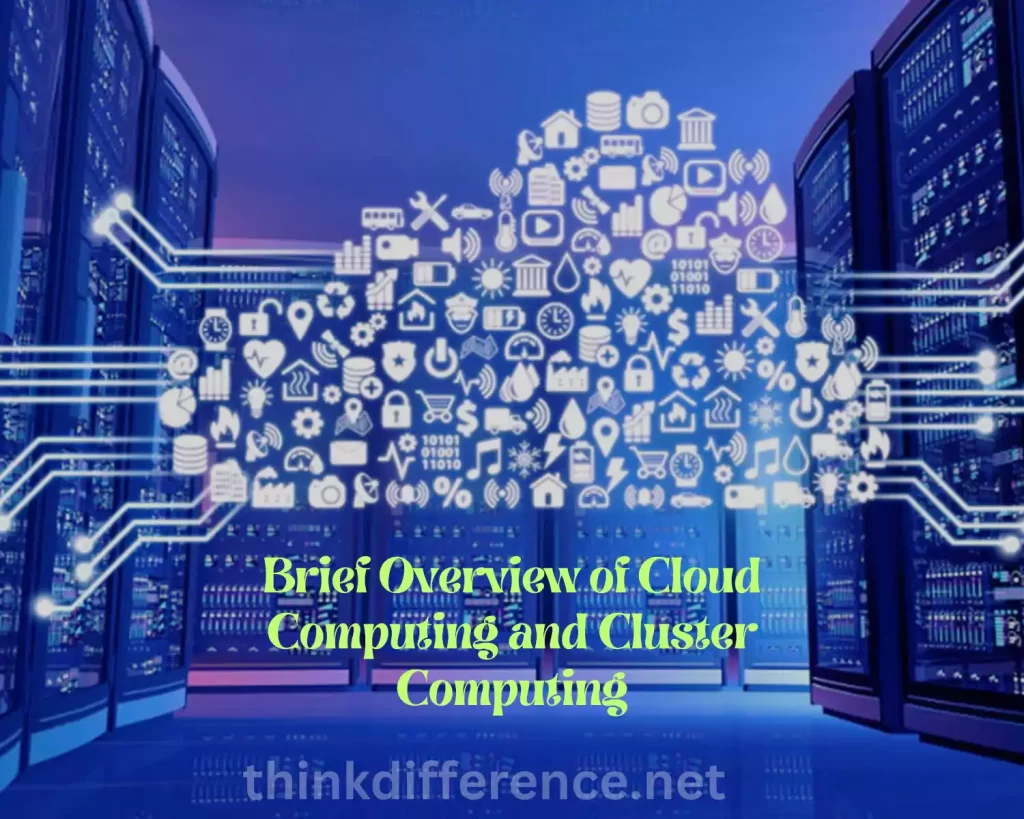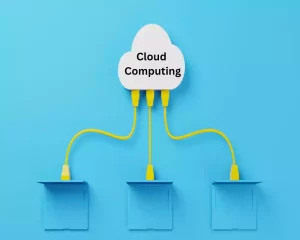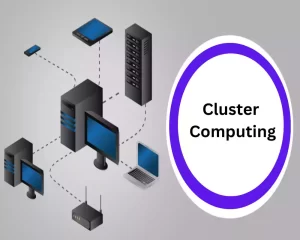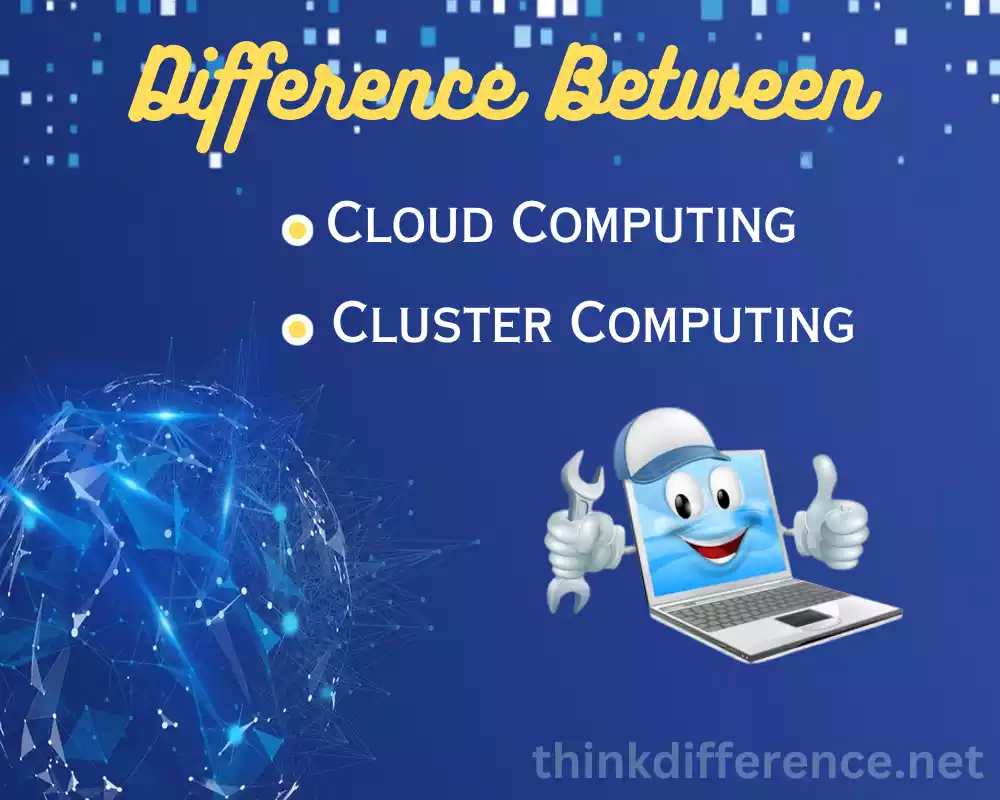Brief Overview of Cloud Computing and Cluster Computing
Cloud computing is an internet-based model that allows users to gain access to computing resources on demand, through data centers offering remote servers offering storage, apps, and processing power services that users can access using various devices via the internet. Cloud computing offers several service models – SaaS and PaaS models provide users with different levels of management control to meet individual application or industry needs.

Cluster computing is an approach that connects multiple computers or servers (known as nodes) together into one cohesive entity to perform computational tasks more quickly and more efficiently than with individual nodes operating alone.
Nodes in cluster computing connect through an internet-connected computer network to perform computational tasks simultaneously in parallel utilizing all available processing power from each node to achieve high performance – perfect for tasks requiring significant computational power such as data analysis or high-performance computer (HPC) computing tasks.
Cluster computing brings many benefits including resource utilization, fault tolerance, and load balancing which all combine efficiently to manage complex computational workloads more efficiently than single-node computing can achieve.
Importance of Understanding Cloud Computing and Cluster Computing in Technology
Cloud computing and clustering play a crucial role in technology for multiple reasons:
- Efficient Resource Utilization: Cloud and cluster computing offer organizations two approaches for optimizing resource use. The cloud allows organizations to dynamically scale computing resources on demand – this helps reduce overprovisioning and underutilization. Cluster computing utilizes parallel processing for workload distribution as an efficient form of resource allocation and utilization. Understanding both concepts allows businesses to make more informed decisions regarding resource allocation and cost-cutting operations.
- Scalability and Adaptability: Cloud computing offers businesses rapid scalability. Businesses can rapidly add or reduce computing resources as needed for fluctuating workloads or peak demand periods, without incurring incursion of other business operations or interruption. Cluster computing also enables scaling by adding nodes to increase processing power – knowing both models enables businesses to design flexible yet scalable systems to support growth and adaptation.
- Performance Optimization: Cloud, cluster, and high-performance computing all play an essential part in reaching this capability. Cloud services give businesses access to powerful computing resources for processing large datasets and conducting complex analyses as well as performing computations distributedly on an online basis. Cluster computing uses parallel processing for faster results when undertaking computationally intensive tasks whereas high-performance computing relies on parallelism for its results understanding these technologies will enable optimization, efficiency gains, and reduction of processing times of critical workloads.
- Data Processing and Management: Cloud and cluster computing play an essential part in data processing and management. The cloud offers scalable storage, data processing tools, and big data analytics capabilities – which makes analyzing large amounts of information much simpler – while cluster computing facilitates distributed processing, efficient parallelism of large datasets, and complex calculations; both technologies help organizations implement effective data management strategies as well as design effective pipelines to process their information efficiently.
- Architecture Design and Decision-Making: Knowledge of cloud and cluster computing helps businesses make educated decisions regarding technology architecture. Understanding their respective capabilities enables organizations to determine which tasks best benefit from cloud or cluster models; with such information comes efficient system design, and selection of suitable services/tools/infrastructure optimization to fulfill specific business requirements.
Understanding cloud computing and clustering are essential skills for technology professionals and organizations seeking to optimize its benefits, optimize resource consumption, achieve scalability and enhance performance, make informed technology architecture decisions, and take informed actions when considering deployment options.
Cloud Computing

Cloud computing is an internet-based model for providing computing services. Cloud servers located elsewhere on the internet host the network needed to store, process and manage data instead of local devices like servers located locally on-premises or devices that store, process, or manage it – offering immediate access on demand to resources like storage applications and databases.
Cloud computing offers several key features and benefits:
- Scalability: Cloud computing services enable businesses to adjust their computing resources based on business needs. Resource allocation and release are straightforward and provide maximum cost efficiency and flexibility.
- Cost-effectiveness: Cloud computing can save businesses money. By eliminating upfront infrastructure investments and paying as they use resources for resources used, businesses can reduce capital expenses while improving cost management.
- Accessibility: Cloud services allow users to access applications and data from any connected device – be that phones, tablets, or computers.
- Reliability: Cloud providers utilize redundant systems and infrastructure, guaranteeing high availability. Data can be replicated across servers located across geographical regions to lessen the risk of interruptions to service or data loss.
- Security: Cloud providers employ stringent security measures to safeguard data and infrastructure, employing encryption, access control measures, and regular updates as defense mechanisms against threats.
Cloud computing operates based on different service models:
- Software as a Service: Users access and utilize software applications over the internet without the need for local installation and maintenance, including email services, CRM systems, and document collaboration tools such as document storage.
- Platform-as-a-Service: PaaS is an on-demand cloud platform designed to facilitate rapid app development by eliminating infrastructure management considerations for developers. PaaS provides tools, frameworks, and runtime environments designed to make development quicker.
- Infrastructure-as-a-Service: IaaS allows users to gain access to virtualized computing resources virtual machines, storage capabilities, and networking features at an economical rate. IaaS allows businesses greater control and flexibility since users can configure and manage the infrastructure themselves.
Cloud computing brings many advantages to businesses. Including reduced infrastructure costs, greater flexibility, and access to advanced technologies. Cloud computing has revolutionized how businesses deploy, manage, scale, and innovate IT resources – leading to digital transformation across industries and driving digital innovation.
Cluster Computing

Cluster computing refers to an advanced computing method that connects multiple nodes – computers that act together – into one large computing system, sharing resources and performing computational tasks as one single unit to achieve optimal performance and processing power.
Cluster computing refers to an environment in which all nodes of a cluster are linked together by either a local network (LAN) and/or a high-speed interface. They communicate using shared memory systems or message-passing mechanisms depending on their architecture and each cluster’s design.
Cluster computing offers several advantages:
- High Performance: Cluster computing enables parallel processing by distributing computation tasks across multiple nodes and thus speeding execution times and increasing computing power, particularly beneficial when performing computationally intensive applications or tasks that can be broken into smaller, independent tasks.
- Scalability: Clusters can easily scale up or down by adding nodes, providing increased workloads or peak demand periods with ample resources to handle efficiently.
- Resource Utilization: Cluster Computing facilitates effective resource usage by harnessing multiple nodes’ collective capacities. Instead of dedicating specific machines or apps, resources may be shared across users or apps to maximise the computing power available.
- Fault Tolerance: Clusters provide high availability and fault tolerance; their workloads can be automatically redistributed among nodes in case of node failure, guaranteeing uninterrupted operation – an essential feature in creating a reliable computing environment.
Cluster computing can be applied across various domains such as high-performance computing, scientific research, data analytics, simulations, and financial modeling. Cluster computing enables organizations to tackle complex problems more quickly while processing huge datasets with massive computing needs for simulations or calculations that demand significant resources.
Cluster architecture comes in many varieties homogenous (with nodes that share similar hardware and systems) or heterogeneous (nodes with differing systems and hardware configuration). Clusters may also be classified by interconnect technology such as Ethernet or InfiniBand.
Cluster computing can be an extremely effective solution for organizations that need access to extensive computational power and want to utilize multiple machines as one computing resource.
Differences Between Cloud Computing and Cluster Computing
There are several key differences between cloud computing and cluster computing:
1. Definition and Scope:
- Cloud Computing: Cloud computing refers to the delivery of computing services and resource Internet. Allowing on-demand access to applications, storage capacity, and processing power. Cloud computing focuses on offering various services without needing to manage elaborate infrastructures.
- Cluster Computing: Cluster computing refers to the act of interconnecting multiple computers together into a single system for parallel processing using their combined computing power and nodes as nodes or node nodes for parallelism and increased computational capabilities. Clusters typically employ distributed processing nodes known as node nodes with high-performance capabilities and enhanced processing speeds as their focus area.
2. Infrastructure and Resource Management:
- Cloud Computing: Cloud service providers run infrastructures. Users have access to virtualized resources hosted by them such as virtual machines, storage and other services hosted on a provider, while resource allocation, maintenance, and scaling are their responsibility.
- Cluster Computing: Cluster computing is an approach in which organizations manage both their infrastructure and resources through clusters. Each cluster is responsible for configuring hardware, software, and networking equipment and allocating its respective resources; resource allocation decisions typically remain with individual organizations.
3. Cost and Pricing Models:
- Cloud Computing: Cloud computing utilizes a pay-as-you-go model that enables users to only pay for resources they use; costs typically depend on factors like usage duration, data transfer capacity, and storage requirements; users can scale resources up or down according to their requirements and costs will be adjusted accordingly.
- Cluster Computing: There may be upfront expenses related to hardware, networking, and infrastructure setup for cluster computing clusters; once established they no longer need to incur fees associated with using resources since organizations have full control and are in full charge of maximizing resource use.
4. Scalability and Elasticity:
- Cloud Computing: Cloud computing offers high scalability and flexibility for users to adjust resources according to their individual needs. Resource provisioning can be done quickly and dynamically to manage fluctuating workloads effectively.
- Cluster Computing: Scaling cluster computing by adding or removing nodes offers instantaneous scaling. Physical adjustments may need to be made within the cluster itself for proper functioning.
5. Data Locality and Processing Latency:
- Cloud Computing: Data and processing may not always be located close enough together in cloud computing environments, creating latency when accessing and processing the data, potentially impacting applications with strict latency requirements or locality data requirements.
- Cluster Computing: Cluster computing provides a better locality of data as processing often happens within the cluster itself, which may reduce latency for applications that rely heavily on the locality of their data.
6. Fault Tolerance and Reliability:
- Cloud Computing Services: Cloud computing services often incorporate fault tolerance and high availability mechanisms that utilize redundant systems, data replicas, and failover strategies to provide service continuity and reliability.
- Cluster Computing: Fault Tolerance in Cluster Computing relies heavily on redundancy; should there be any nodes fail, their workload will be distributed evenly amongst the remaining nodes. Organizations must implement various mechanisms and recovery strategies as part of an overall fault tolerance strategy in place to protect their workload from disruptions and downtimes.
7. Use Cases and Suitability:
- Cloud Computing: Cloud computing can be applied to various tasks, from website hosting and SaaS apps to collaboration tools. Cloud computing offers users flexible scalability with easy access.
- Cluster Computing: Cluster Computing is used for computationally intensive tasks such as scientific simulations and high-performance computing, providing greater performance and control.
Use Cases and Examples
- Software-as-a-Service Applications: Cloud computing allows for the delivery of Software-as-a-Service applications over the Internet, giving users access to software like CRMs, email services, project management tools, and collaboration platforms.
- Infrastructure Scalability: Cloud computing allows businesses to adapt computing resources according to their changing workload or seasonal spikes, providing businesses with flexibility when needed and extra computing power when projects or seasonal spikes arise. Scalability can provide businesses with fluctuating workloads or those who require additional resources for projects or seasonal spikes with the extra computing power needed during those moments when peak loads arrive or resources for certain projects need extra support.
- Cloud Storage for Backup and Storage: Cloud storage enables organizations to securely store, backup, and manage data remotely to reduce physical storage needs by offering disaster recovery and backup solutions that eliminate physical storage devices as a necessity.
- Big Data Analytics: Cloud platforms offer organizations powerful tools and infrastructure for processing and analyzing large volumes of data, offering insight that allows for data-driven decision-making as well as unlocking business value from it.
- Development and Testing Environments: Cloud-based platforms and environments for development (PaaS) give developers all of the resources necessary to design, test and deploy apps without needing to manage physical infrastructure themselves.
Use Cases of Cluster Computing:
- Scientific Simulations and Research: Cluster Computing is used extensively for scientific simulation and research in numerous disciplines including physics, bioinformatics, and weather forecasting.
- High Performance Computing: Cluster computing is essential in high-performance computing when complex calculations or simulations must be run, such as computational fluid dynamics (CFD), molecular modeling, or financial models. HPC clusters may be utilized for such areas as computational fluid dynamics (CFD), molecular modeling, or financial models.
- Data Analysis and Machine Learning: Cluster Computing Can Facilitate Big Data Analyses and Machine Learning Tasks – Cluster computing has long been used for big data analysis and machine learning tasks, with large datasets handled efficiently with complex transformations performed efficiently across nodes in cluster-based systems. Training machine learning models more efficiently by spreading the workload across many nodes is also possible using this form of computing.
- Cluster Computing in Media Rendering & Animation: Cluster computing has long been used by entertainment businesses to produce high-quality graphics and special effects with reduced rendering times for movies, games, and visual effects. Employing distributed processing frames it allows faster rendering times for movies, games and visual effects rendering.
- Financial Modeling and Simulation: Cluster computing has proven essential in the financial world for complex financial modeling, risk evaluation, and simulation. Clusters provide an easy means of processing large datasets as well as performing computational tasks necessary for forecasting, portfolio optimization, and portfolio monitoring.
These use cases demonstrate how cloud computing, cluster computing, and high-performance computing can be leveraged across different domains to meet various computational requirements ranging from scalable apps and storage of data for scientific simulations to high-performance computing for scientific modeling purposes.
Summary
Cloud Computing and Cluster Computing are two revolutionary paradigms in modern computing. Cloud Computing offers businesses flexibility, scalability, and cost-efficiency, while Cluster Computing delivers high performance and processing power through parallel processing. By understanding their strengths and applications, organizations can harness the full potential of these computing technologies to drive innovation and achieve success in the digital era.



